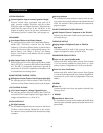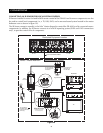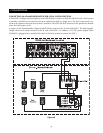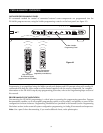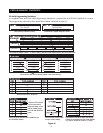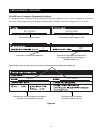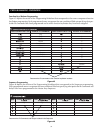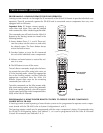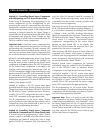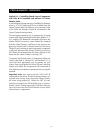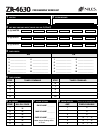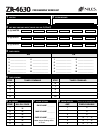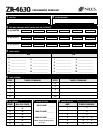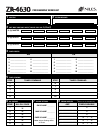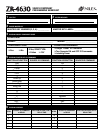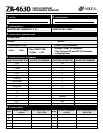
Method #1– Controlling Shared Source Components
with IR Repeating and 12V Home Theater Status
When using IR Repeating, IR programming for the
source components can be accomplished by pro-
gramming the actual IR commands from the source
component’s included remote control into the Home
Theater learning remote control. An IR output of the IR
repeating or control system for the Home Theater is
connected to the IR Input of the Master ZR-4630. All the
IR commands sent from the Home Theater are then
passed through to all IR Flashers connected to the ZR-
4630 for control of source components.
Important Note: If you have source components that
require an IR command to be turned on and they are
not provided with a separate ON and a separate OFF
IR command from their included remote controls, or if
you have two or more shared source components that
are an identical br
and and model, refer to Method #2.
All the IR command programming of the Home Theater
learning remote control is done in the standard way
using the actual remote controls for the shared source
components, with
one exception. The OFF IR command
for the shared source components is not taught to the
learning remote oper
ating the home theater. Only the
ON IR commands are taught for the shared source com-
ponents turned ON and OFF via IR commands.
The OFF
IR commands for the shared sour
ce components are
programmed into the ZR-4630, which is responsible for
turning these components OFF when all ZR-4630 zones
and the home theater are OFF.
Method #1 requires a 12V DC system status signal
pro
vided from the Home Theater system to the Home
T
heater Sync Input of the Master ZR-4630.
This allows
the ZR-4630 to “know” whether the Home Theater is
actually ON or OFF and pro
vide the sour
ce compo
-
nents’ OFF commands at the appropriate time.
The IR programming for the actual Home Theater
recei
v
er/processor is not affected w
hen sharing sour
ce
components using this method and is done in con-
junction with programming described.
Method #2 –Controlling Shared Source Components
with Niles R-4 Commands and 12V Home Theater Status
A second method of programming a Home Theater
remote control is av
ailable when the shared source
components are identical and/or they have a single
po
wer ON/OFF IR command.
W
ith this method, you
teach the Niles R-4 Remote Control IR commands to
the Home Theater learning remote, rather than the IR
commands from the remote controls included with
the shared source components.
You teach the Home Theater learning remote control
the R-4 IR commands issued from Source Buttons 2, 3,
4, and all other commands (excluding Tuner, Volume
+, Volume –, Mute, and OFF). Sending a Niles Source
Button IR command from the Home Theater tells the
ZR-4630 receiver the Home Theater is turning on and
which source it is selecting. Synchronized source
components corresponding to the source button
pressed are then turned ON, if not already ON.
F
inally, the ZR-4630 issues the sequence that is pro-
grammed for that source component.
After the Master ZR-4630 receives a Source Button IR
command and it knows whic
h source is selected, it
will then issue the programmed IR commands for that
source component when function-key IR commands
are received from the Home Theater.
Identical shared sour
ce components are operated
individually using this method via the IR routing fea-
ture of the ZR-4630 (refer to Identical Source
Components in the Operational Overview Section).
Method #2 requires a 12V DC system status signal
provided from the Home Theater system to the Home
Theater Sync Input of the Master ZR-4630. This allows
the ZR-4630 to “kno
w” whether the home theater is
actually ON or OFF and pro
vide the sour
ce compo-
nents’ OFF commands at the appropriate time.
The IR programming for the actual Home Theater
recei
v
er/processor is not affected w
hen sharing sour
ce
components with this method and is done in conjunc-
tion with the programming described.
Important Note: T
here is no need to teac
h the Niles
OFF command to the Home Theater learning remote
control when using Method #2. As in Method #1, when
the
H
ome
T
heater turns off, the
1
2V signal is remo
v
ed
from the ZR-4630 Receiver and it now “knows” that the
Home Theater turned off. It will then check if there are
any other zones on the ZR-4630 active before it turns
off the shared sour
ce components.
56
PROGRAMMING OVERVIEW



